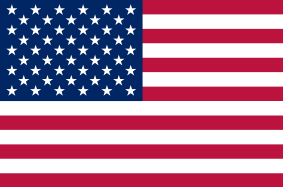-
My nasal bridge is curved. Will I need a separate surgery to correct the deviation?
An overgrown septal cartilage can make the nose look deviated. Usually, the surgery for the deviation, which is to fracture the nasal bone, is performed simultaneously with nasal tip surgery.
-
My nose has both hump and droopy tip. Will the surgery be difficult?
There are many cases where people with humped nose have high nasal bridge. In this case, the nasal slope can be simply improved my shaving the hump and raising the nose tip. However, for those who have wide nasal bridge, lateral osteotomy is necessary. Since the surgery could get quite complicated, it is very important to select a highly experienced surgeon.
-
My nose gets congested often. Is this treatable?
More than half of the patients who suffer from chronic rhinitis and sinusitis have deviated septum. Even if the deviation may not be seen from the outside, there’s a big possibility that the septal cartilage is bent, blocking the airway causing rhinitis and infections. Yes, it can be treatable with our ENT surgery.
-
Is it true that my hump can grow back?
Not at all times. Due to our bones’ regenerating capabilities, the hump can slightly grow back. However, if the fracture is properly done, the reoccurrence is preventable.
-
Does the hump have to be fractured?
Many people might think it’s dangerous, but fracturing the hump is the most effective solution to prevent the hump from growing back again. Please note that fracturing the nose is not as dangerous as many people think. There are only a few blood vessels and nerves in the nasal bone, and when the surgery is done by a highly skilled surgeon, the surgery outcome will be satisfactory.
-
Can just the nose tip be corrected?
If the patient has high nasal bridge and the problem is only the droopy nose tip, then yes, the nose tip can be simply raised through autologous cartilage. It can be done if the nose does not need big modifications.
-
Are succession rates low for revision surgeries?
The nasal tissues are damaged immediately after the surgery and it takes 6 months for them to recover. Revision surgeries does not mean that it will trinity the skin or damage the immune system. If done well with the right materials, it can correct the defects made from the previous surgery. However, since they’re more complicated than the initial ones, surgeons have to be more careful and meticulous in dealing the revision cases.
-
What if the implant is noticeable?
Implant projection is not the problem with the implant, but rather has more relations to the surgeon’s skill and techniques. The implant is only noticeable if it’s too high or narrow for the patient’s nose. Therefore, the surgeon has to design and re-shape the bridge into a narrower width for the implant to fit.
-
Why does my nose look pinched after the surgery?
The nose can look pinched and unnatural if the nasal cartilage is tied too tightly or if the skin is too thin.
In order to prevent such unnaturalness, transparency and deformation, the cartilage should be designed carefully, and should be wrapped with artificial tissues.
-
What if my nose tip becomes hard after the surgery?
Hard nasal tips are often due to implant insertion on the tip area. Wonjin uses soft autologous tissues such as ear and septal cartilage and each have its advantages. Septal cartilage is harder than the ear cartilage, and it is suitable in sustaining and supporting the nose tip. On the other hand, ear cartilage is softer and more flexible, suitable in making a round, natural nose tip.
-
Which is better? Silicone implant vs. Gore-tex?
Both materials are natural and safe. However, silicone is easier to be removed during revision surgery.
Gore-tex tends to integrate more with the skin tissues with its porous component, and therefore, is hard to be removed.
-
Can my bulbous nose become sharp?
Yes of course. Bulbous nose can become slim and refined through tip plasty.












